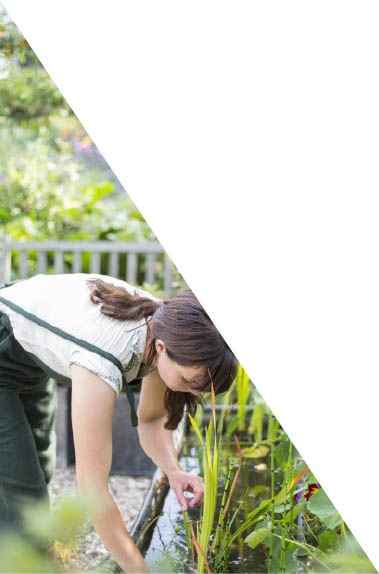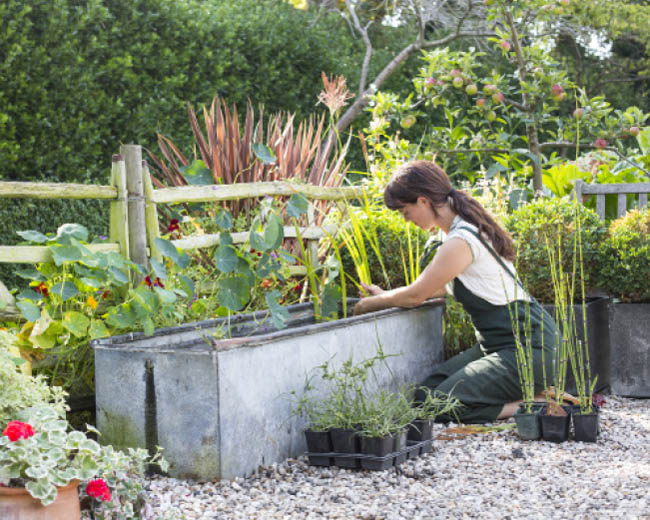

 AN AFTERNOON
AN AFTERNOON
We all love ponds, including the small creatures and birds that visit your garden and yard. However, there are a few things to consider about having a pond. A pond can be thought of as quite traditional and (dare I say) a bit messy, as well as a lot of work to build, requiring considerable outdoor space. But it is possible to have a small container pond (pot-sized!) in any corner of the yard. And if you get your container right, it can be anything but traditional. You could make one using glass for a contemporary look that is also perfect for helping educate young children about different habitats and insects. Here, though, I have chosen an old animal-feed trough for its rustic yet geometric charm—industrial chic meets cottage garden.
Fully watertight container
Garden hose
Oxygenating plants like hornwort, spiked water milfoil, or water violet
Gravel or stones
Water-loving plants (see overleaf)—you will find a wide selection at a nursery that specializes in aquatic plants
Upturned pots and stones to maintain proper depth and allow wildlife access into and out of the pond
1.Clean the container, preferably with plain rainwater; if not, use tap water. Do not use strong chemicals because they will potentially contaminate the water and make it a hostile environment for plants.
2.Fill the container with water from a rain barrel. If you are using tap water, you will need to let it sit for a few weeks before adding any fish.
3.Add oxygenating plants, which will stay submerged near the bottom.
4.Place water lilies (dwarf varieties) at the bottom of the container.
5.Place gravel or stones on the soil surrounding your aquatic plants in their pots to weigh them down.
6.Place upturned flowerpots or rocks in the water to prop up the plants you will be putting in the water.
7.On top of these, place your aquatic plants, still in their pots and weighed down with gravel or stones.
8.Move the pots around until you are happy with their arrangement.

I am using Iris laevigata, Nymphaea pygmaea (dwarf water lily), and Equisetum fluviatile. (Water lilies need to be dwarf varieties, or they will quickly take over.)
